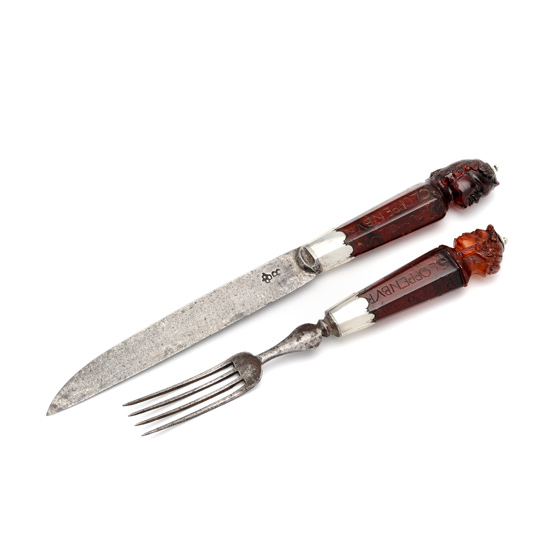Amber Wedding Cutlery for Maria Cloppenburg
Northeast German, probably Pomerania, c. 1680
Amber, silver, steel
Height 15-19 cm
The ostentatious wedding cutlery consists of a four-tined fork and a knife with a long, pointed blade. The hexagonal handles are carved in two large pieces of translucent red amber representing the head of a woman and a man: in this case a bride and groom. Indeed, in the early modern period, it was tradition to present the bride with cutlery. In this case, a particularly elaborated and precious ensemble indicates that the bride was of high social standing. The name of the bride has also been inscribed on both sides of the handles: “Maria Cloppenbur[g]” (the “g” is probably behind the silver mount), a name common in the northern Germany. Comparable sets of wedding cutlery are on display in important European museums, for instance in the treasury of the Munich Residenz, in the Germanic National Museum in Nuremberg, in the Museum of Decorative Arts in Cologne, in the State Hermitage in St. Petersburg as well as in the Victoria and Albert Museum in London. Another similar cutlery set in Leipzig in the Grassi Museum is also worth mentioning, for the amber handles bear the inscription that they were made in Stolp, a small city in Pomerania, in northeastern Germany.


